
views
Using the Postal Service to Stop Mail
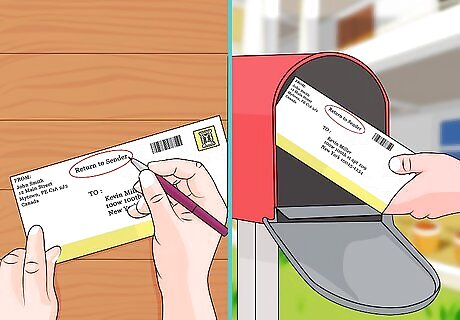
Write "Not at this address" on the exterior of the envelope. (This works only for first class mail.) Then place the mail in any outgoing mailbox. This may serve to notify the original sender that the addressee no longer lives at that address. The original sender then has the opportunity to update their records, and ideally you will stop receiving mail from them. Individuals and small companies sending mail are more likely to respond to this than large companies that rely on the National Change-of-Address database for address updates.
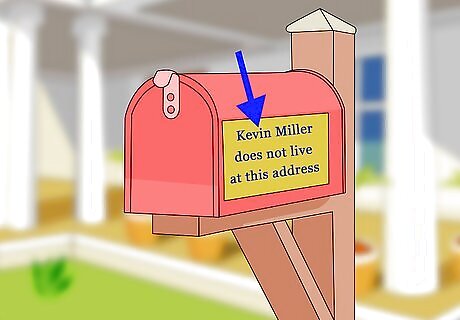
Place a sticky note on or in your mailbox. Write on the note, "(Former Resident's Name) does not live at this address". Place the note on the inside of the door or the mailbox itself. This will serve as a constant reminder to the postal carrier to look through the incoming mail and remove any of the previous resident's mail that they might be about to deliver. Instead, you can write on the sticky note, "Only the following live here:" and then list whoever is eligible to receive mail at your address. Again, this gives the mail carrier the opportunity to remove other people's mail from what they're about to deliver. A visual reminder can be a big help.

Cross out the barcode. Sometimes writing "Not at this address" does not get the job done because of the automated system the postal service uses. The United States Postal Service prints on every piece of letter mail a bar code that indicates the address to which it is being sent. USPS uses these bar codes to sort the mail. Even if you have previously written a "Return to sender" note on the envelope, the bar code will probably cause the mail to come right back to your address. Mark through the bar code at the bottom of the envelope and write "Not at this address" near the mailing address on the envelope. Here's how to completely "remove" a bar code: Use a black-ink pen, and draw numerous short, vertical lines between the lines of the bar code. Do this for a half-inch or so anywhere on the bar code. This will obliterate the bar code (which is not illegal, by the way) and make it impossible for a postal sorting machine to send the letter back to your address.Stop Mail for Previous Residents Step 3 Version 3.jpg Marking out the bar code (and the address) will cause the system to consider the mail "undeliverable." Mail carriers receive mail in bundles for each individual address. The previous resident's mail could be in between pieces of mail that are actually for you.
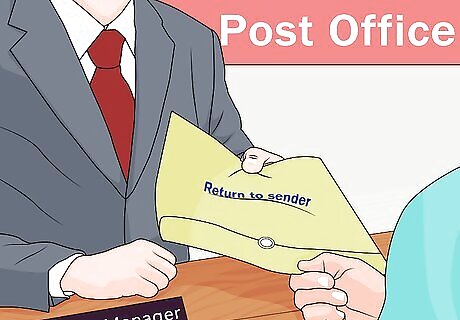
Approach your mail carrier directly. Explain the problem either to your specific postal carrier or to a clerk or postmaster at your local post office. Ask them to stop delivering the previous resident's mail to your mailbox. Be pleasant about it. Give your mail carrier any first-class mail you have received addressed to a previous resident. This may be more effective than simply writing a note on the mail. You can throw away any bulk-rate mail that's not for you: it's neither forwardable nor returnable. The post office will just throw away bulk-rate mail that is returned to it. Stop Mail for Previous Residents Step 4 Version 3.jpg Speaking with your mail carrier in person may encourage them to look into the matter and check to see if a change-of-address form has been filed.
Obeying the Law Regarding Other People's Mail
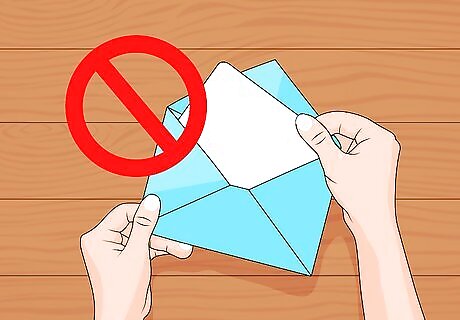
Do not open the mail. In the US it is a federal offense to open mail that is not addressed to you. If you accidentally open first-class mail, tape the envelope closed and write "Not at this address" on the envelope and place it back in the mailbox. If you throw away first-class mail after you open it, you are obstructing the delivery of that person's mail. (Again, bulk-rate mail -- anything other than first class -- is not forwardable and is not returnable.) In some countries you can serve up to five years in prison or pay a hefty fine for opening someone else's mail. Opening someone else's first-class mail is especially considered theft, because such mail is forwardable.
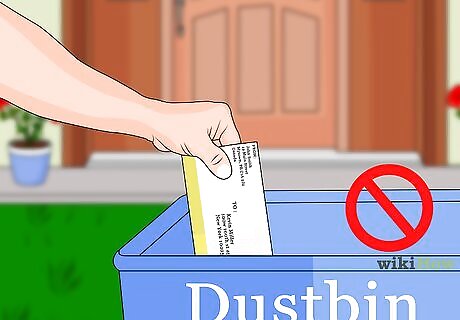
Do not throw away mail that bears first-class postage. Throwing away someone else's first-class mail is another form of mail theft, because you are keeping the other person from getting their mail. In addition to being a Federal crime, throwing away someone else's first-class mail is counterproductive and will not solve your problem. If you throw away first-class mail, the sender may never learn that the addressee no longer lives at your address. Keep in mind that the addressee may have filed a change-of-address and that there has been a mistake by the Postal Service. The addressee likely still wants their first-class mail. Be courteous and help that person out.
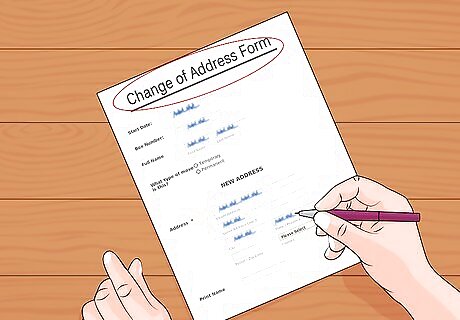
Do not fill out a change-of-address form. It may be tempting to redirect the mail of the previous resident. Even if you know where the previous resident now lives, do not file a change-of-address form with the Postal Service. You must be the previous resident or their executor, guardian or authorized officer or agent to file a change-of-address on their behalf. You can ask the USPS to fill out form 3575Z (internal COA) if you are receiving previous-resident first-class mail. Filing a change-of-address form on behalf of another person is a Federal crime. You could be fined or go to prison. If you do file a change-of-address for another person, a customer-notification letter will be sent automatically to their new address in an attempt to ascertain whether the change actually reflects the addressee's wishes. It's possible there could be legal problems for you. However, if the previous resident has no objection to the fact that you filed a change-of-address on his/her behalf, there will be no negative consequences for you.
Stopping Mail Addressed to a Deceased Person
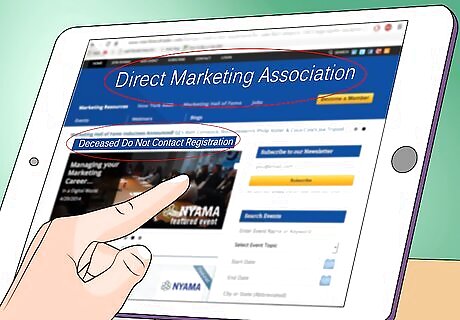
Report junk mail. Go to the Direct Marketing Association website (DMAchoice.org) and go to the "Deceased, Do Not Contact" registration page. Enter the deceased person's information to stop receiving bulk-rate mail addressed to them. It might take about three months for the changes to take effect. This may not completely stop you from receiving bulk-rate mail addressed to the deceased, but it should cut down on the volume of that mail. You will need to enter the deceased person's name and address, as well as your name, email address, and relationship to the deceased.
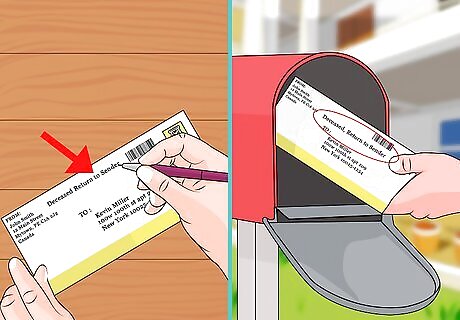
Write "Deceased -- Return to Sender" on the mail. Then place it back in your mailbox. This will notify the post office and the original sender that the person is deceased. Also, notify the mail carrier that this previous resident is deceased. If this does not work, make a visit to the post office to speak with the station manager.
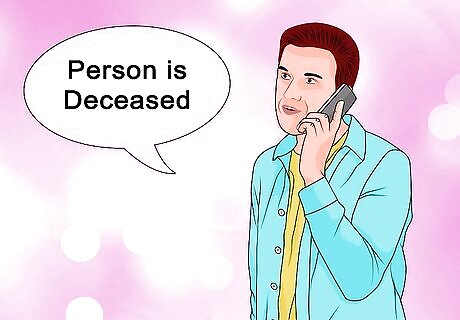
Contact mailers directly. If the mail you are receiving consists of magazines, charity solicitations or subscription services, contact the sender(s) directly and let them know the addressee is deceased. This is more time-consuming but is likely to eliminate the problem. You can continue to write "Deceased -- Return to Sender" on these items if you do not want to contact the sender(s) directly. Registering the deceased with the Direct Marketing Association (DMA) will not stop magazine and subscription services from sending mail. Only companies that use marketing and mailing lists will receive a notification from DMA. Opening and reading a deceased person's mail is a crime (assuming a legal representative of the deceased cares to make an issue of it).
















Comments
0 comment